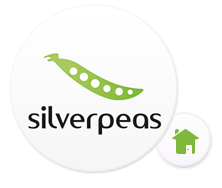Applications
There are many players in the collaborative market, who can be broken down into 7 categories:
- The majors such as Microsoft (Sharepoint), IBM (Quick’R), or Oracle (Collaboration suite),
- The portals such as Plumtree or Vignette,
- The collaborative “bricks” associated with a EDM, such as Documentum’s eRoom or Livelink, or ERP such as Netweaver from SAP.
- Integrated Opensource such as Afresco, Exo, Jahia or Silverpeas
- Hosted Saas (software as a service) such as Google or Yahoo
- Open source specialists (best of breed) : shared diaries, wikis, blogs and search engines
- All the rest, based on or around groupware, such as Lotus Notes, Exchange, or Groupwise or even WCM (Web Content Management).
According to our assessment, only the first 5 categories are likely to realistically evolve into collaborative platforms worthy of the name. Most of these platforms can be permanently installed or made available in ASP mode.
The free SaaS model has confidentiality problems concerning the exchange of information and cannot be considered as part of an industrial model.
Ownership is limited for this type of collaborative software, to buying a license or distribution rights. This market typically involves the open source community and often means paying for support and maintenance.
Software editors have to be financially inventive to turn their investment into profit. For example: a free beta version, a licensed stabilised version, advertising banners with free versions or a monthly rent in ASP mode.
Aside from the free SaaS versions financed by advertising, the cost of owning a limited monthly license can range from a minimum of 2-5€ up to a maximum of 50-80€.
We believe the most viable solutions include:
- Intuitive where little or no training is needed
- Coherent and Integrated rather than the Open-source brick-assembly model, which uses non-homogeneous ergonomic and sets up a distinct authentication process making search engines inefficient
- Application oriented: allowing new applications to be added in a "mix"
- Flexible and upgradable allowing users to deploy their tools one after the other, according to their need and use
- Inter-Changeable and Inter-Operable with the type of information storage used and in the respect of the market standards (XML, JSR, REST, etc.)
